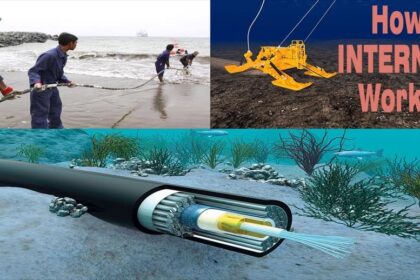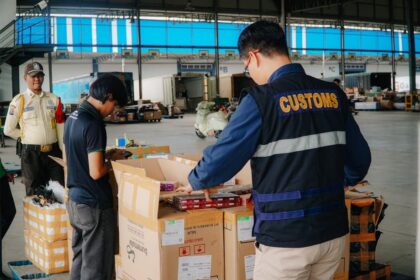China and the EU Lock Horns Over Medical Device Trade: A New Front in Global Economic Tensions
China has announced sweeping new restrictions on the import of medical devices from the European Union (EU), marking a significant escalation in the ongoing trade dispute between the world’s second and third largest economies. The move, which took effect immediately following its announcement on July 6, 2025, is a direct response to the EU’s own recent curbs on Chinese medical device companies. The tit-for-tat measures highlight deepening tensions over market access, industrial policy, and the future of global trade in high-tech sectors.
- China and the EU Lock Horns Over Medical Device Trade: A New Front in Global Economic Tensions
- What Triggered the Latest Round of Restrictions?
- China’s Countermeasures: Scope and Impact
- Industry and Diplomatic Reactions: Escalation or Negotiation?
- Broader Trade Tensions: Medical Devices as Part of a Larger Pattern
- What’s at Stake for Global Healthcare and Innovation?
- Legal and Regulatory Complexities: Defining ‘Local’ and ‘Foreign’
- Geopolitical Context: Trade, Technology, and Trust
- Looking Ahead: Prospects for Resolution or Further Escalation?
- In Summary
At the heart of the dispute are accusations from both sides of unfair treatment and protectionism in the lucrative medical device market—a sector critical not only for economic growth but also for public health. The new Chinese restrictions target government procurement contracts for medical devices valued above 45 million yuan (about $6.3 million), barring most EU-based companies from participating unless they have significant operations within China. The rules also limit the proportion of EU-made components in devices supplied by non-EU companies to no more than 50% of the contract value.
These developments come at a sensitive time, with a major China-EU summit scheduled for later in July 2025, and as both sides grapple with broader trade frictions over electric vehicles, alcohol, and agricultural products. The outcome of this dispute could have far-reaching implications for global supply chains, innovation, and patient access to advanced medical technologies.
What Triggered the Latest Round of Restrictions?
The immediate catalyst for China’s new measures was the European Commission’s decision in June 2025 to restrict Chinese companies from bidding on public procurement contracts for medical devices in the EU single market exceeding €5 million (about $5.7 million). The EU’s move was justified by findings from a months-long investigation, which concluded that Chinese policies systematically limited access for EU medical device producers to China’s government contracts in an “unfair and discriminatory way.”
According to the European Commission, Chinese state policies—particularly the “Made in China 2025” initiative—set explicit targets for domestic hospitals to procure high-end medical devices from local manufacturers, aiming for 70% domestic content by 2025 and 95% by 2030. The EU argued that these policies, combined with aggressive state support for Chinese firms, created an uneven playing field and effectively shut out foreign competitors.
In response, the EU invoked its International Procurement Instrument (IPI), a tool designed to ensure reciprocal market access for European companies. The IPI allows the EU to impose restrictions on countries that do not offer fair access to their own public procurement markets. The June 2025 action was the first major use of this instrument, signaling a tougher stance on trade reciprocity.
China’s Countermeasures: Scope and Impact
China’s Ministry of Finance and Ministry of Commerce quickly retaliated, announcing that for government procurement projects with a medical device budget exceeding 45 million yuan, EU companies—except those with established operations and manufacturing within China—would be excluded from bidding. The restrictions cover a wide range of products, including:
- Surgical instruments
- Medical magnetic resonance equipment
- Blood-based pharmaceutical preparations
- Orthopedic implant components
- Medical laser devices
For non-EU companies participating in such tenders, the value of EU-imported medical devices must not exceed 50% of the total contract amount. However, exceptions are made for cases where only EU-imported devices can meet the procurement requirements, ensuring that critical medical needs are not compromised.
Importantly, the measures do not apply to EU-funded companies that operate and manufacture within China. This exemption provides some relief for major European medical device firms like Siemens Healthineers and Royal Philips, both of which have significant local production in China. According to company statements and industry analysts, these firms are “minimally affected” due to their strong local presence, with Philips reporting that 90% of its sales in China originate from local manufacturing.
Industry and Diplomatic Reactions: Escalation or Negotiation?
The reciprocal restrictions have drawn concern from industry groups and business chambers on both sides. MedTech Europe, the EU’s medical devices industry association, warned that such measures “risk deepening trade tensions and ultimately deny patients timely access to indispensable medical technologies.” The European Chamber of Commerce in China echoed these concerns, highlighting the uncertainty created by the lack of specificity in the new rules and the risk of overly stringent enforcement by local authorities.
Chinese officials, for their part, have framed the move as a necessary response to what they see as EU protectionism. A spokesperson for China’s Ministry of Commerce stated:
“Regrettably, the EU has ignored China’s goodwill and sincerity, and proceeded with restrictive measures that create new protectionist barriers. Therefore, China has no choice but to adopt reciprocal restrictive measures.”
Chinese trade experts argue that the country’s approach is more measured than the EU’s, as it does not exclude EU-invested enterprises operating in China. Zhou Mi, a senior researcher at the Chinese Academy of International Trade and Economic Cooperation, explained:
“In fact, the measure China has taken differs from the EU’s approach. The EU’s action excluded Chinese companies outright, whereas we have not excluded EU enterprises operating in China from supplying the relevant products. We continue to adhere to relevant Chinese regulations and aim to ensure fair treatment for products that are manufactured and supplied within China.”
Despite the tough rhetoric, both sides have expressed a willingness to resolve the dispute through dialogue. The upcoming China-EU summit is seen as a critical opportunity to address not only the medical device standoff but also broader issues of market access, industrial subsidies, and the future of economic cooperation.
Broader Trade Tensions: Medical Devices as Part of a Larger Pattern
The medical device dispute is just one front in a broader pattern of escalating trade tensions between China and the EU. In recent months, both sides have imposed tariffs and restrictions on a range of products, including electric vehicles (EVs), brandy, pork, and dairy products.
In June 2025, the EU imposed tariffs of up to 45% on Chinese-made EVs, citing concerns over state subsidies and unfair competition. China responded by launching anti-dumping investigations into European liquors and agricultural products, and by imposing duties of up to 34.9% on European brandy—though major producers like Pernod Ricard, LVMH, and Remy Cointreau were spared if they agreed to minimum pricing requirements.
These tit-for-tat measures reflect deeper anxieties about industrial policy, technological leadership, and the balance of trade. The EU has long complained that its companies face significant legal and administrative barriers in China, while Chinese officials argue that European actions are discriminatory and undermine the principles of free trade.
What’s at Stake for Global Healthcare and Innovation?
The stakes in the medical device dispute go beyond trade balances and diplomatic posturing. The medical device industry is a cornerstone of modern healthcare, providing essential technologies for diagnosis, treatment, and patient care. Disruptions to supply chains, market access, or innovation could have real consequences for hospitals, doctors, and patients around the world.
For years, global medical device manufacturers—including those from Europe, the United States, and Japan—have benefited from access to the vast Chinese market. China’s growing demand for advanced medical technologies has driven significant foreign direct investment (FDI) in the sector. According to China’s Ministry of Commerce, FDI in the country’s high-tech industries reached 109.04 billion yuan between January and May 2025, with a 20% year-on-year increase in the medical instrument and equipment manufacturing sector.
Industry experts warn that continued escalation could stifle innovation, raise costs, and limit patient access to cutting-edge treatments. As Oliver Bisazza, chief executive of MedTech Europe, put it:
“Measures of this nature risk deepening trade tensions and ultimately deny patients timely access to indispensable medical technologies.”
Legal and Regulatory Complexities: Defining ‘Local’ and ‘Foreign’
One of the challenges in implementing these new restrictions lies in defining what constitutes a “local” versus a “foreign” company. While China’s rules exempt EU-invested enterprises that manufacture within the country, the lack of clear criteria for what qualifies as such an enterprise has created uncertainty for European firms. The European Chamber of Commerce in China has called for greater clarity, warning that local authorities may interpret the rules in ways that exclude even highly localized manufacturers from bidding on government contracts.
Similarly, the EU’s International Procurement Instrument sets thresholds and component limits that require careful monitoring and enforcement. Both sides face the risk that complex rules could inadvertently disrupt supply chains or penalize companies that have made significant investments in local production.
Geopolitical Context: Trade, Technology, and Trust
The medical device dispute is unfolding against a backdrop of shifting geopolitical alliances and growing competition over technology and supply chains. As the United States and China vie for global leadership in high-tech industries, the EU finds itself navigating a delicate balance between economic engagement and strategic autonomy.
Chinese leader Xi Jinping has called for strengthening strategic cooperation with the EU, even as tensions have grown over issues ranging from rare earths to climate policy. The upcoming China-EU summit, marking the 50th anniversary of diplomatic relations, is expected to address not only trade disputes but also broader questions of trust, reciprocity, and the rules of global commerce.
Looking Ahead: Prospects for Resolution or Further Escalation?
With both sides signaling a willingness to negotiate, the coming weeks will be critical in determining whether the medical device dispute can be resolved through dialogue or whether it will become another flashpoint in the broader China-EU economic relationship. The outcome will have significant implications for businesses, healthcare providers, and patients—not only in China and Europe but around the world.
As trade experts and industry leaders have emphasized, cooperation and fair competition are essential for driving innovation and ensuring access to life-saving technologies. Whether China and the EU can find common ground remains to be seen, but the stakes could hardly be higher.
In Summary
- China has imposed new restrictions on government procurement of EU medical devices, targeting contracts above 45 million yuan ($6.3 million) in response to similar EU measures.
- The restrictions exclude EU companies without significant operations in China and limit the proportion of EU-made components in devices supplied by non-EU firms.
- The dispute is part of a broader pattern of escalating trade tensions between China and the EU, including tariffs on electric vehicles and brandy.
- Industry groups warn that continued escalation could harm innovation and patient access to advanced medical technologies.
- Both sides have expressed willingness to resolve the dispute through dialogue, with a major China-EU summit scheduled for later in July 2025.
- The outcome will have significant implications for global supply chains, healthcare, and the future of international trade rules.












